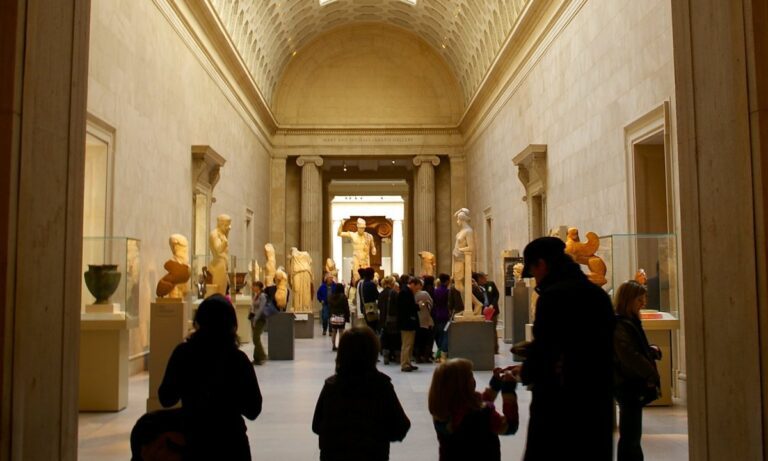A collection of important Cycladic antiquities shared between the Metropolitan Museum of Art in New York and the Greek government has been exhibited at the Museum of Cycladic Art in Athens. The 161 companies were formed over 40 years by businessman Leonard Stern. On his Instagram feed, Max Hollein, the director of the Metwelcomed “a fantastic new partnership and solution for bringing private collections with complex provenances into the public sphere.”
Billionaire Stern amassed his fortune through pet supply sales, real estate and renewable energy innovations and kept most of his artwork in his home on Fifth Avenue in Manhattan. He said in a statement: “Having become increasingly aware that my collection, in its scope and size, had become unique outside of Greece, I decided to work with Greece, the Museum of Art of Cyclades and the Met so that visitors to Greece and New Zealand York can appreciate the magnificent beauty and mystical simplicity of these incredible objects carved some 4,500 years ago.
The objects, created in the Cycladic islands off the coast of Greece in the Aegean Sea, date to the start of the Cycladic Bronze Age civilization, the third millennium BC. “Almost all major types of Cycladic marble figurines are represented from the late Neolithic to the end of the Early Bronze Age, including (works such as) violin-shaped, Plastiras, Hybrid (And) Louros, » a statement from the Met said. The collection also includes a large number of marble vessels, including beakers, bowls, necked pots or “kandilas”, as well as footed cups and paddles.
Stern donated his collection to the Hellenic Ancient Culture Institute, a nonprofit organization based in Delaware. According to The New York Times, the institute is managed by a board of directors whose president and the majority of members are appointed by the Museum of Cycladic Art. Stern told the New York Post he had worked on the multi-stakeholder project with Greek Culture Minister Lina Mendoni, saying: “My professionals worked with their professionals and that’s how they structured it. This is what I was advised to do.
The complex multilateral agreement emphasizes above all that “the Greek heritage law provides that the Greek State is the sole owner of the collection”. The deal, which was approved by the Greek parliament in September, will bring all 161 Cycladic objects to the Met for a 25-year exhibition starting at the Museum of Cycladic Art.
“After the collection has been on display in its entirety at the (Met) museum for ten years, selected works will travel periodically to Greece for 15 years for exhibition while other loans of Cycladic art will be transferred to the Met. After this 25-year loan period, important works of Cycladic art will continue to be loaned to the Met from Greece for an additional 25 years,” the Met said in a statement. Stern will also fund a new archive room at the Met’s Onassis Library for Hellenic and Roman art, as well as a new archivist role; scholarships will also be awarded to Greek researchers to study ancient Greek masterpieces.
But the arrangement caused controversy among some critics, like Greek politician and history professor Sia Anagnostopoulou, questioning the provenance of some Cycladic objects. Stern said all the works were purchased from legitimate sources while Mendoni said in a speech in September that the ministry had no evidence that items from the Stern collection had been exported illegally, he adds.The New York Times.
The new collection sharing model could also pave the way for other important restitutions such as that of the Parthenon Marbles from the British Museum in London. Greek government spokesperson Yannis Oikonomou said that the exchange will create “a procedure and a means which encourage other collectors of Greek antiquities to take similar steps” without involving bureaucratic legal procedures.
• Back home. Treasures of the Cyclades on the way back, Museum of Cycladic Art, Athens, November 3-October 31, 2023


